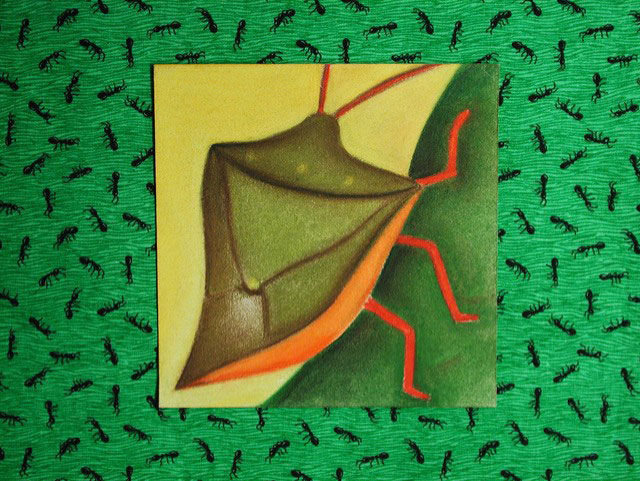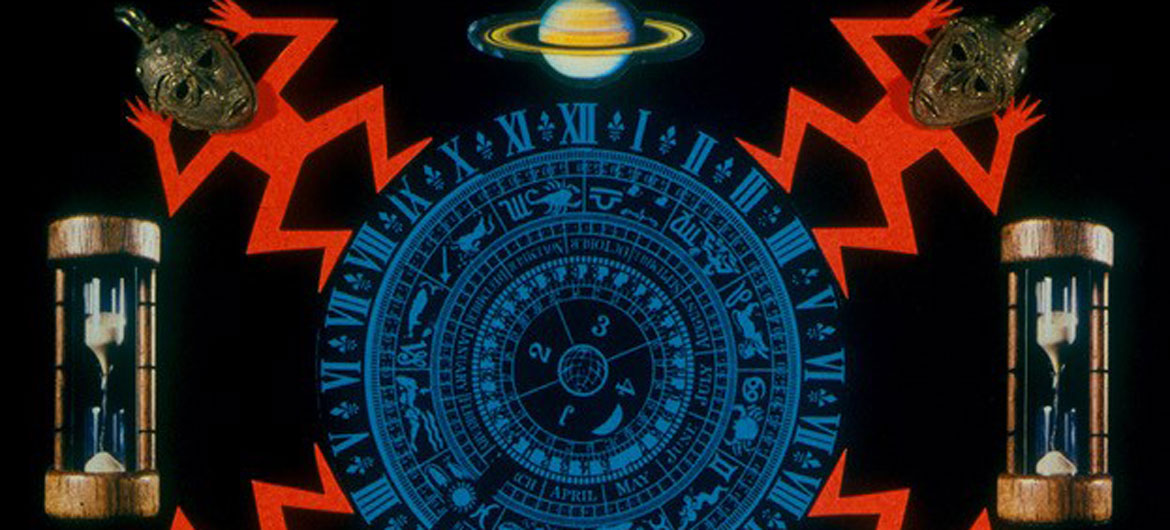“Once I saw my drawings move, it was a big magical connection,” Cambridge animator Karen Aqua told The Boston Globe in 1994. “It is a really addicting experience, to see the things moving. For all the things we come to hate about it, like the process being so tedious, and how long it takes to do it and how hard it is to get your stuff shown, it seems impossible to do anything else.”
Aqua made 12 films, plus 22 shorts for the children’s television show “Sesame Street,” before her death from ovarian cancer in 2011 at age 57. World Music/CRASHarts and the Institute of Contemporary Art/Boston present “Animated Films of Karen Aqua,” a screening, at the Boston museum at 8 p.m. Friday, March 22. It’s a chance to see seven of her personal projects plus one of the “Sesame Street” shorts. (Her films are available via rental from Vimeo and her website: karenaqua.com.) They’ll be accompanied by a live soundtrack of alto saxes and drums led by Aqua’s husband, Cambridge saxophonist-composer Ken Field of Birdsongs of the Mesozoic and Revolutionary Snake Ensemble. Field will be joined by alto sax players Stan Strickland, Lihi Haruvi and Neil Leonard, with Savannah Marshall on drums.
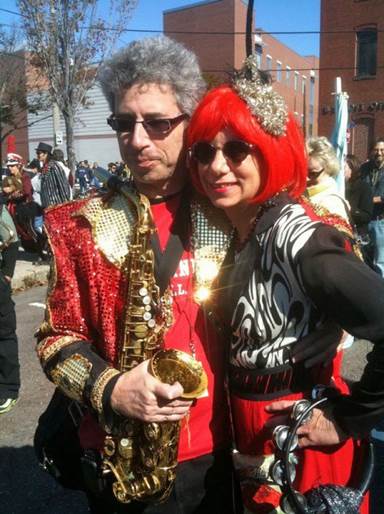
This live-soundtrack screening arose because about a year and a half ago, Field, who composed music for and played on the soundtracks for most of Aqua’s films, was invited to show Aqua’s films and perform live musical accompaniment at the 2017 Animator Festival in Poland. “I had written all but one of them, but they were written for very different instruments,” Field says. He dug out the original sheet music—and rearranged them for four alto saxes and one drummer. “In some cases, it meant adding parts. In some cases, it meant getting rid of parts.”
He considered different ways of synching the life music and recorded films. “In the end, I decided let’s just fly free and let the chips fall where they may,” Field says. “You just can’t be perfect with that kind of thing.”
“It’s not difficult for me to do this. It’s very positive,” Field says.
“The work is so much a part of me and part of my life. It just seems natural really,” he tells me. “I like being reminded of Karen. I like the opportunity to have her presence, to experience her presence, which we all will do through her films. The best way to honor someone you love after they’re gone is to think about them.”
If this is the kind of coverage of arts, cultures and activisms you appreciate, please support Wonderland by contributing to Wonderland on Patreon. And sign up for our free, weekly newsletter so that you don’t miss any of our reporting.
Eureka
Karen Aqua was born in 1954 and grew up in Forty Fort, Pennsylvania. She studied illustration at Providence’s Rhode Island School of Design. The animator Frank Mouris—creator of his autobiographical “Frank Film”—visited the school in 1975. “It was a eureka experience,” Aqua told The Boston Globe in 1981. “It got me so excited that I decided to do a film as my senior thesis.
That became her 1976 film “Penetralia” (which is scheduled to screen at the ICA event). A person runs across hills, which become a face, then the runner jumps into the eye and becomes a fish, a bird, a pegasus, an angel. Hands draw hills that the person runs up and down, then falls and spins and flies and so on. Aqua’s films are not stories, they’re more like dances.
“The film is about kind of an exploration, an internal journey,” Aqua told Spoiler Alert Radio in 2009. “And in a way it was reflective of the journey of learning animation.” Field played flute on the soundtrack—along with someone on vibes—improvising along to the footage.
Aqua and Field had met in Providence. She was at RISD. He was studying computer science at Brown University. “We had kind of traveled in some of the same hippie circles,” Field says, “been at some of the same parties.”
One of their last summers of their undergraduate studies, they both saw an ad on a signboard and separately arranged for the same ride share west. She was heading to Denver. He was going to San Francisco. “She was drawing the whole way,” Field recalls.
When they reached Colorado and she was getting out, Field says he slipped a note into her crayon box saying he’d miss her. Back in Providence in the fall, they gradually moved from friends to becoming a couple. They dated for nine years before getting married in 1984. “She was very interested in not ruining it by getting married,” Field recalls.
“She lived on air and water when she graduated,” Field told the Globe in 2011. “She never owned a car. She lived in cheap, cheap apartments, and just made it so she could live her life as an artist. People marveled at her ability to sustain herself and live on next to nothing and do her work without compromising.”
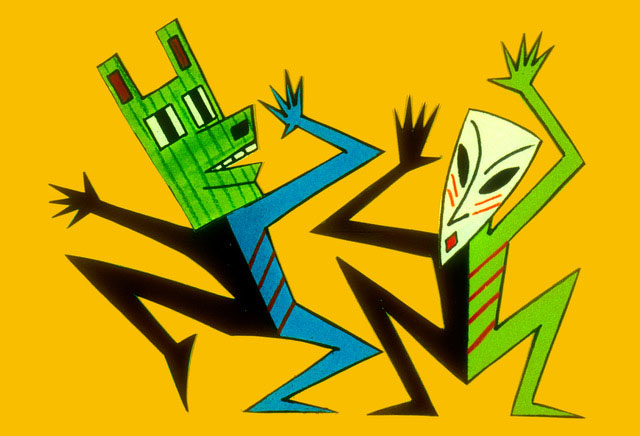
Deny yourself
The ICA screening is scheduled to begin with Aqua’s 1982 film “Vis-à-Vis.” A person splits in two, one filling pages of paper with drawings, the other travels to a tropical beach and the mountains and a café. The traveler finally returns. They embrace and kiss, then become one again.
The tile “literally means face-to-face,” Aqua told Spoiler Alert Radio in 2009. “I wanted to make a film about the duality of an artist and the dilemma of animation really required so much time and being chained to your desk. Maybe there were other things you’d like doing, but to finish a film you really had to stick to it and deny yourself. So I kind of imagined a way that one person could be in two places at one time and, of course, through animation anything is possible.”
Aqua and Field moved into a top-floor condo of a Cambridgeport triple-decker in 1989. Aqua mainly drew her films at a workspace that she shared with clay artist Jeanee Redmond at Vernon Street Studios in Somerville. Animation “suited my personality,” Aqua told the Globe in 1994. “I could lock myself in a room and have complete control over my work, and not have to depend on anyone else.”
Her animations were main hand-drawn in pastels or colored pencils on paper. “Each one of the frames is like a total work of art,” Field says. In her films, they often flash by at 12 drawings per second. “I produce about five minutes of animation a year,” Aqua told the Globe in 1986. “And some years I just think.”
To help pay the bills, she taught animation at Emerson College and Boston College and in workshops around the country. Her fellowships and residencies and his music took them across the United States.
“I was attracted to animation because accessibility is very important to me,” Aqua told the Globe in 1981. “If you draw something, it hangs on a wall someplace, but film is a medium that’s meant to be shown to other people. Too many people in art school were into art for art’s sake. I think it’s a great form for communicating with people.”
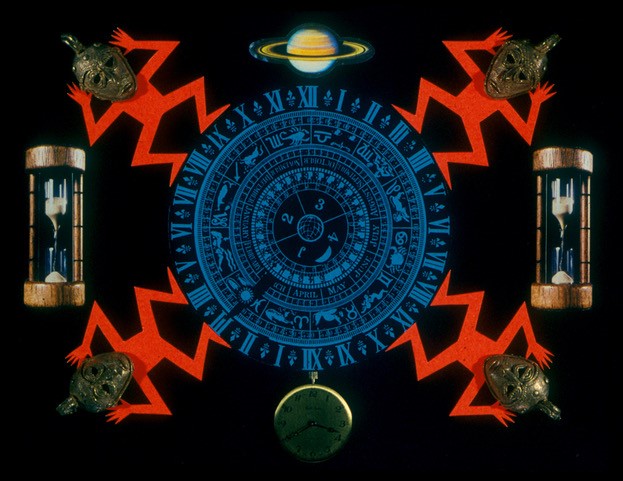
Explorations
Aqua’s 1989 film “Kakania,” inspired by African designs, shows pictogram people dancing. Her 1992 short “Perpetual Motion” is a meditation on time that began its life as a four-screen installation at Boston’s First Night. Her 1997 film “Ground Zero/Sacred Ground,” was inspired by an ancient Native American rock art site in south-central New Mexico situated 35 miles from the detonation site of the world’s first atomic bomb. “I thought what would be really interesting,” Aqua told Spoiler Alert Radio in 2009, “is to make a film where these worlds are juxtaposed.”
In the film, masks squint their eyes closed as a bomb tears the horizon. Pictograph people burst out of rocks, skeleton fish swim down a stream toward a barbed wire fence caging atomic symbols, rain kills corn, a pictograph person huddles afraid on the ground.
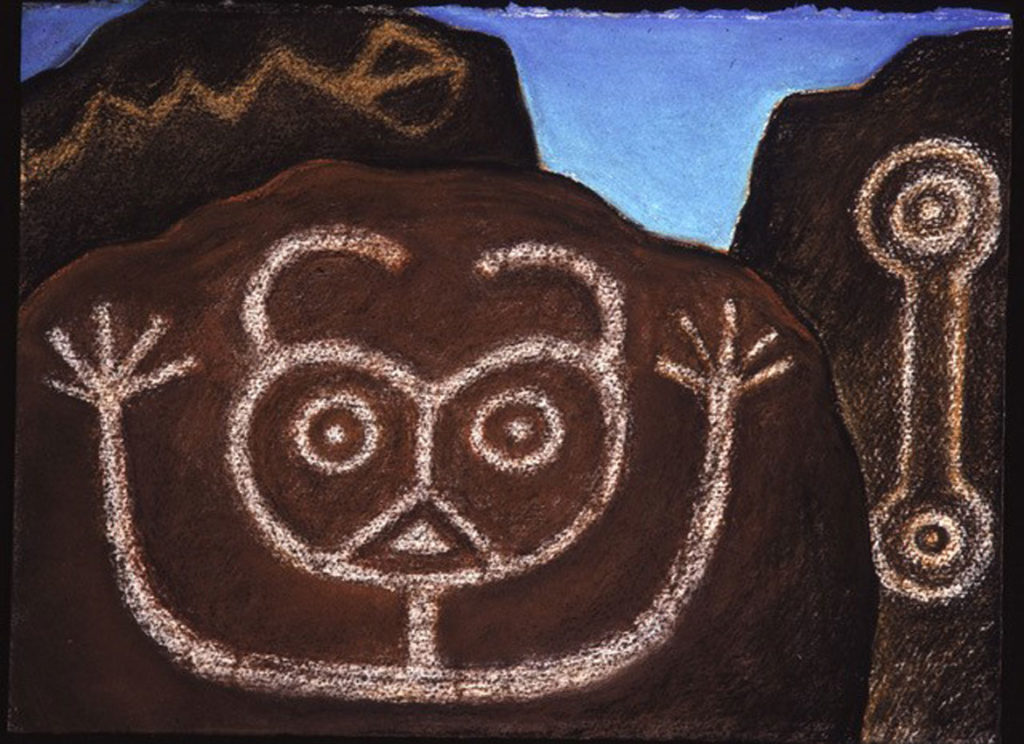
When the Institute of Contemporary opened its new building in Boston’s seaport in December 2006, Karen Aqua and Joanna Priestley’s six-minute animated “Andaluz” (not in the Marc 22 program)—their ode to Spain, filled with beetles, dancers, bones, bull fighters—was the “first film in that first program,” the Globe reported then.
Aqua favored certain motifs in her films—silhouette people, pointing squiggles, dancing pictographs, a flavor of synesthesia. “I don’t think of my films really as storytelling so much, as kind of graphic explorations,” Aqua told Spoiler Alert Radio in 2009. “And also a thing that’s important in a lot of my work is transformation, things changing from one thing to another.”
Aqua and Field worked together closely on 2007’s “Sensorium.” “Our first true collaboration,” Aqua told Spoiler Alert Radio in 2009. “It’s my first totally abstract film.”
“We composed together. We even said we co-directed it,” Field says. “We came up with these elements, this alphabet of a visual gesture and a musical gesture. So we came up with a palette of these gestures. The process was to take these elements and make a film out of them. … It was a very challenging film.”
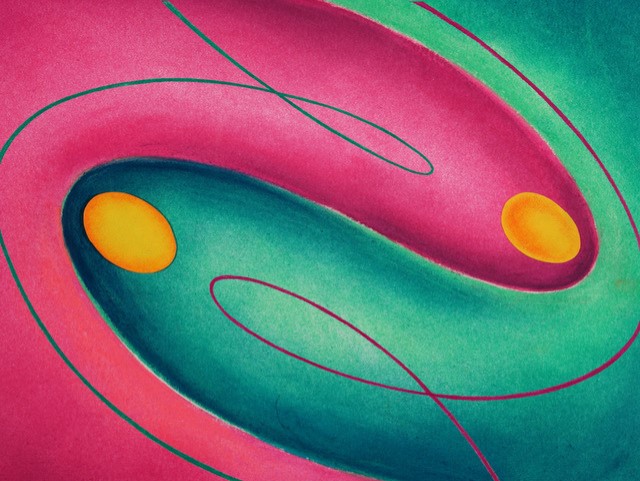
Illness
During these years, Aqua was diagnosed with cancer. She addressed this in her 2009 film “Twist of Fate,” one of her very best, but not on the ICA program. “A bit of a downer,” Field explains.
The film is rife with body scans, medical paperwork, dancing pills and syringes. Red ovals multiply out from the pelvis, take over. A scalpel slices open the body, pulling out red ovals, then the body is stitched closed. “It’s an experimental animation that explores illness and body and kind of internal landscape inside the body,” Aqua told Spoiler Alert Radio in 2009.
Field says, “She started making it when we was in remission from her illness. By the time she finished it, she had had reoccurrences and it wasn’t a very positive time.”
Aqua sketched in waiting rooms. “To me those were a reflection of her state of mind at that time. There’s a lot of angst, as you might expect,” Field says. “She didn’t want this to be her last film. She didn’t want it to be her swan song. So that’s why she started working on ‘Taxonomy.’”
That 2011 short, included in the ICA program, would be her final film. It features animals, vegetables, minerals. Then she’s “mixing them all up, with the sort of inspired perspective that the world is all one,” Field says. “She finished that film just three weeks before she died.”
“Taxonomy” debuted at the ICA in May 2011. They came to the museum right from the hospital. “She showed that at the ICA actually just a few weeks before we lost her,” Field remembers. “She was in a wheelchair with oxygen. At first she said, ‘I’m not going up on stage.’ But then she went up on stage and answered questions.”
If this is the kind of coverage of arts, cultures and activisms you appreciate, please support Wonderland by contributing to Wonderland on Patreon. And sign up for our free, weekly newsletter so that you don’t miss any of our reporting.
